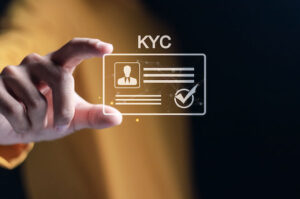It’s no secret that the process of employee onboarding is crucial for the success of any business. As an HR professional, it’s your job to make sure they feel welcome and supported in their new role so they can get up to speed more quickly and contribute more effectively. It is an important step that every organization has to take to ensure new hires are successful. It can be a lengthy and exhausting process for HR professionals, but it is well worth it.
Onboarding is the process you go through to welcome new employees and help them feel comfortable in their new roles. It’s an essential part of building a strong relationship between your company and your new hire – but it’s also something that can be easily overlooked or handled incorrectly.
At BankersHub, we believe in offering useful information. To drive maximum productivity, you need the right employee on board. To ensure that you’re getting the most out of your team, developing a sound onboarding process that provides a baseline of knowledge and skills is important.
Here are some tips to help you create an onboarding process that works for your company:
Create an onboarding plan
The most important step in the process is to create an onboarding plan before the employee arrives. This ensures you have all your ducks in a row and can provide a smooth transition into their role.
If you’re looking for ways to improve your onboarding process, here are some key things to keep in mind:
- The onboarding process doesn’t have to be complicated – remember to make it personalized, welcoming, and smooth for new hires.
- Keep paperwork ready before they arrive.
- Make sure there’s someone available to give them a tour of the office once they start work so they know where everything is located and who everyone is.
Finalize and prepare paperwork
Your onboarding process should be as seamless and efficient as possible for you and the new employee. That’s why it’s important to finalize all paperwork before they start. Make sure you’ve completed any tax forms, benefits enrollment, HR forms, and policies/procedures ahead of time so that there are no surprises when your new employee shows up on day one.
Remember their training schedule. This will help them immediately acclimate to the company culture and keep them engaged in their job as soon as possible.
Introduce them to their team, managers, and leaders
Your onboarding process should include a walk-through of the office. Not only will you be introducing your new hire to their coworkers, but you can also show them where they can get coffee, lunch, and other amenities.
The best way to introduce your new hire is by leading them around the office and introducing them to their team and managers. This helps break the ice and allows employees to ease into their new role at work. If you haven’t already, set up an orientation period for new hires so that they can get a feel for the company culture from the get-go.
Create a living trust agreement with your employee
When you’re onboarding a new employee, you want to make sure you’re doing everything you can to make them feel welcome and comfortable in their new role. One way to do that is by creating a living trust agreement with them.
A living trust agreement is an agreement between you and your new hire that outlines their responsibilities, goals, and expectations. It also details what they will get in return for those responsibilities and goals.
In addition to being an effective way of communicating what’s expected of your employees, it’s also a great way to help them feel invested in the company from day one—which will only make them more likely to stick around when they’re ready for advancement or when they want to find another job elsewhere.
Make sure they understand your company’s culture, mission and goals
As the employee walks away from their first day, you’ll want them to clearly understand why they’re at the company and their role. It’s also important for them to know how they can get help if needed, as well as an overview of the company’s strategy.
New employees need to know what kind of workplace they’re walking into. That includes their expectations and how they should behave with other employees. They also need to understand the company’s values and how they impact everything from hiring decisions to day-to-day operations. This information can be communicated through onboarding materials such as welcome kits or videos that describe company culture and values in detail.
New hires should understand the reason why the company exists in the first place. Suppose you’re an IT consulting firm that specializes in helping small businesses manage their technology needs effectively. In that case, you may want to emphasize this point during your onboarding process by showing them examples of clients who have benefited from using your services and explaining how their success is directly linked.
Set performance expectations right away
A good onboarding program will set clear expectations for new employees and provide them with the tools they need to succeed. Make sure you are crystal clear about what is expected of them in their role and how they can meet those expectations. You want your new hire to feel like they know what is expected and have a plan to reach their goals right out of the gate so there should be no surprises or miscommunications when it comes time for performance reviews.
Explain company culture during orientation. Part of setting performance expectations involves discussing how your organization operates—how decisions are made, whether there is room for collaboration on projects or tasks versus following strict procedures, etcetera. The more transparent you are about these things from day one (and throughout), the less likely that employees will feel blindsided by changes once they’ve settled into their new roles at work.
Give new hires meaningful work as soon as possible
The best way to onboard new employees is to give them meaningful work from day one. If you want new hires to find their feet and become productive employees as quickly as possible, they must have meaningful work waiting for them when they start. This will help them feel like they’re contributing while also allowing you to observe and evaluate their performance.
The good news is that it isn’t difficult to do this—you need to ensure that the work your company assigns is challenging enough that new hires feel challenged but not so difficult that is becomes overly intimidating.
Ensure they know what to expect
Ensuring new hires know what to expect for the HR onboarding process is an important part of a successful strategy. How do you expect them to know if you don’t tell them?
It’s also important to remember that new hires are often nervous about starting a new job. They may need clarification on themselves and their abilities, and this can make it more difficult for them to get started on the right foot. This is why it’s so important to be clear about what will happen during the HR onboarding process and what they should expect from their new co-workers and managers.
One way to do this is by giving new hires a copy of your company handbook when they accept your job offer. This can help them feel more comfortable by providing information about things like benefits packages and vacation time policies, which can help them feel more prepared for what’s ahead when they start working at your company!
Check in with them regularly
After you’ve done the initial onboarding, you must check in with your employees to see how they are feeling and if they have any questions or concerns. You might say something like, “How are things going? If there is anything I can help you with, please let me know.”
Generally, most people will not tell you they need help unless asked directly. So asking them if anything else would help them be more successful is a good way to ensure everyone feels supported and included in the company culture.
Broaden your knowledge in HR
Now that you’re familiar with the most important onboarding best practices, it’s time to start implementing them at your own company! The most important thing to remember is that this process will take time—you can’t expect immediate results. If you want your new hire to feel like they belong from day one, then make sure they get a personalized welcome and keep checking in with them throughout their first few weeks on the job.
Sign up today for BankerHub’s Human Resource Management courses that cover topics like:
- The role of human resources in organizations
- Benefits management and employment law updates
- Employee relations strategies
Learning is a lifelong pursuit, and it’s important to keep up with HR trends. While you may have been trained in the basics of employee onboarding, it’s worth your time to learn more about best practices for this process and others related to employee engagement and retention. With our online courses, you can keep up on all things HR—from recruiting to compensation—so that you can confidently handle any situation that comes your way.








